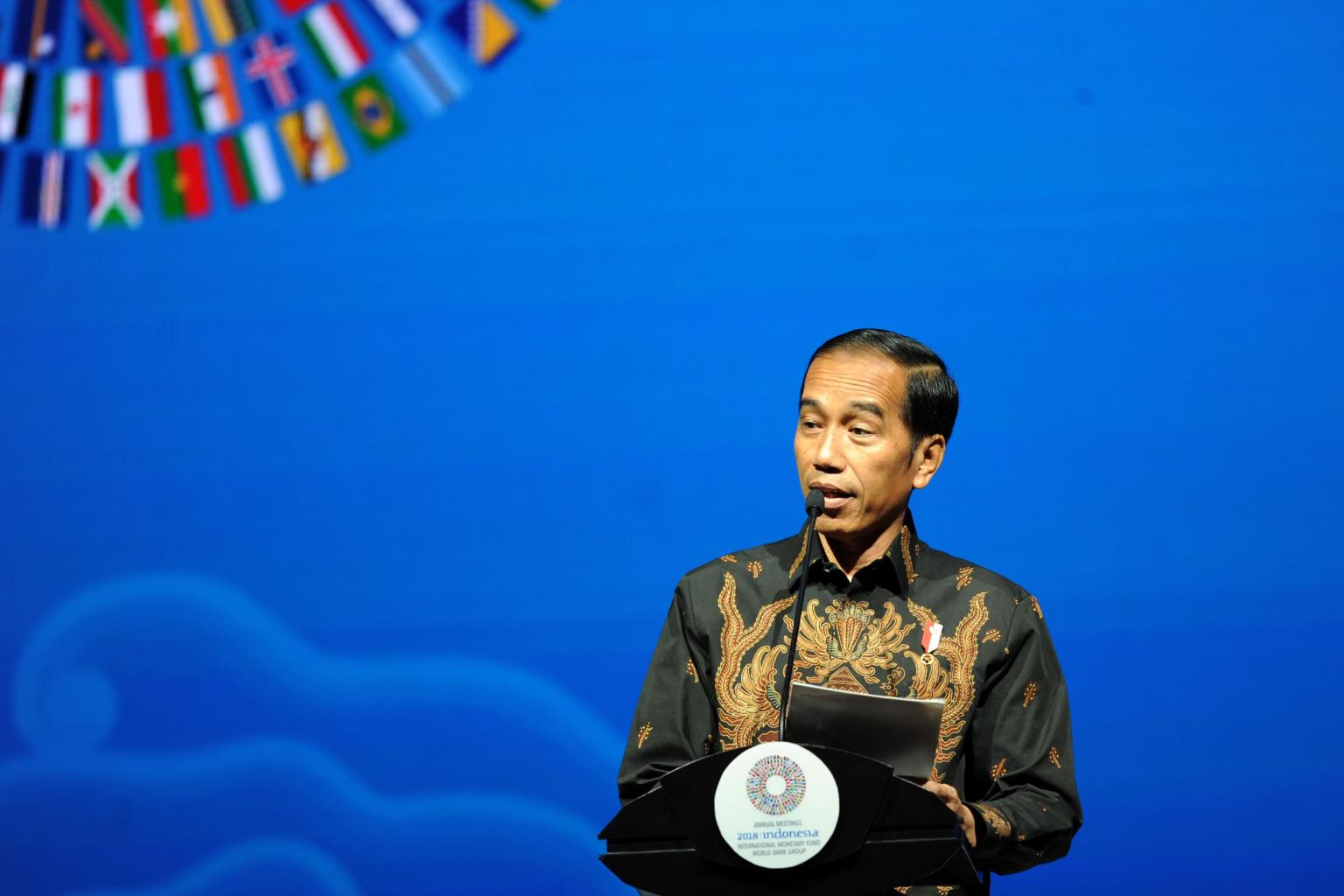The Asian Voice
Time for Asean to drive the Indo-Pacific process: Jakarta Post writers
In their article, the writers say that Asean needs to show leadership on its own concept of the Indo-Pacific, to protect regional interests.
Sign up now: Get insights on Asia's fast-moving developments

Indonesia's President Joko "Jokowi" Widodo used the term Pacindo when referring to the Pacific and Indian Ocean region in his maiden speech at the Asean summit in 2014.
PHOTO: AFP
Arifi Saiman and Endy M. Bayuni
Follow topic:
JAKARTA (THE JAKARTA POST/ASIA NEWS NETWORK) - Asean is making significant progress in deliberating over the new regional Indo-Pacific architecture, but the bigger challenge is yet to come: convincing the big powers, particularly China and the United States, to come on board.
Also, there is an unresolved issue with the term "Indo-Pacific", with China harboring suspicions that it is part of a containment policy against its rise in the region and the world.
The "Indo-Pacific Outlook" concept paper, drafted by Indonesia, provides the 10-member Asean the intellectual leadership to discuss the future of the wide region that is already becoming the main driving force of the global economy.
Several countries have developed their own ideas, proposals and terminology with their own perspectives.
Japan has the Free and Open Indo-Pacific Strategy (FOIP) and India its Security and Growth for All in the Region (SAGAR).
Also, the US has expanded its Pacific military command to encompass both oceans to become the US Indo-Pacific Command (USINDOPACOM) and Russia has proposed the name "Indo-Asia Pacific" to ensure it is not excluded from the emerging regional architecture.
The Asean concept is not an attempt to blend all these different ideas into one single concept, but rather it has its own proposals and ideas that are often different from others.
For one, it emphasizes common interests rather than common values, the idea being that it is always easier for countries to collaborate on the basis of mutually beneficial cooperation.
Values can be very divergent because of different political systems.
The US and Australian Indo-Pacific proposals stress values such as democracy, making them an exclusive club.
The Asean Indo-Pacific concept would be inclusive as it uses the East Asia Summit (EAS) forum as the launch pad.
The EAS, inaugurated in Kuala Lumpur in 2005, was an Asean creation that expanded on its regionalism to bring its 10 members together with China, Japan, India, South Korea, Australia and New Zealand.
It expanded again later to include the US and Russia.
Rather than creating a new layer of organisation, which would mean more meetings and summits, Asean's proposal seeks to revitalise the EAS, since all the major powers in the Indo-Pacific region are already represented at the annual summits.
The expansion would still be significant as it would bring in all littoral states along the two vast oceans for a combined gross domestic product in 2017 of US$52.1 trillion (S$71.5 trillion), 57 per cent of the global economy, as compared to US$46.5 trillion for the 18 EAS countries.
With China soon to overtake the US as the world's largest economy the center of the global economy is shifting to Asia.
By using the East Asia Summit platform, participating countries can sit down and explore possible mutually beneficial cooperation projects across many platforms.
One of these is China's Belt and Road Initiative (BRI) that seeks to connect countries in Asia and Europe through land and maritime routes, which partly overlaps with the proposed Indo-Pacific region.
The plan to build a business link between Aceh in Indonesia and India's Andaman and Nicobar Islands in the Indian Ocean is an example of how two countries in the Indo-Pacific region can forge cooperation on the basis of their converging interests.
"Indo-Pacific" may be universally recognised terminology to depict this region that encompasses the countries beside the two vast oceans, but the name may be an issue that hinders China's participation.
To Beijing, "Indo-Pacific" smacks too much of the US agenda to build an alliance with Japan, Australia and India - called the Quad - essentially to contain China.
The Indo-Pacific as a geopolitical construct would inevitably lead to competition among existing and emerging powers in expanding their spheres of influence.
China has actually expanded its sphere of influence through the BRI, but other than the issue of the name there is no reason for Beijing to be concerned with the emergence of the regional architecture.
Indonesia, and Asean for that matter, is flexible about finding an appropriate name that would accommodate China's concerns.
Alternative names have been mooted in the Asean discussion, including Indonesia's "Asean's Indo-Pacific Concept" and Malaysia's "Asean Inter-Oceanic Concept".
There is also Pacindo, short for the Pacific and Indian Ocean region, which President Joko "Jokowi" Widodo used when he eloquently presented his vision of Indonesia as a Global Maritime Fulcrum (GMF) straddling the two oceans in his maiden speech at the Asean summit in Naypyitaw, Myanmar, in 2014.
Leaving the name issue aside, what is most important first and foremost is for Asean to take ownership of the Indo-Pacific concept.
Now that everyone recognises the emergence of a new regional architecture, it is vital for Asean to take the leadership in driving this process, for geographical reasons and for its geopolitical and geo-economic interests.
Asean centrality has never been more important.
Arifi Saiman is director of the Center for Policy Analysis and Development on Asia-Pacific and Africa Regions at the Policy Analysis and Development Agency (PADA) of the Foreign Ministry and Endy M. Bayuni is a senior editor of The Jakarta Post. The paper is a member of The Straits Times media partner Asia News Network, an alliance of 23 news media organisations.

